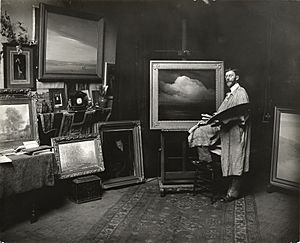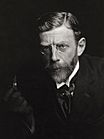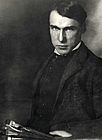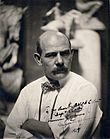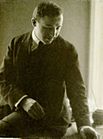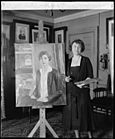The Pastellists facts for kids
The Pastellists was a group of artists who came together in New York in late 1910. Their main goal was to show art made using a special material called pastel. This group helped put on four art shows in New York between 1910 and 1914. They broke up in 1915. Some members of The Pastellists even had the first idea for an art show that later became the famous 1913 Armory Show. This was the first big exhibition in America to feature modern European art.
Contents
The Pastellists: A New Art Group
How The Pastellists Started
Many artists used pastel, but not many art groups focused on or included pastel works in their yearly shows. Two earlier art shows helped spark a new idea. One was at the Rand School in 1909, organized by Leon Dabo. The other was the Exhibition of Independent Artists in 1910, put together by Robert Henri. These shows made artists want to display more personal art. They wanted to exhibit their work without worrying about what older, more traditional groups like the National Academy expected. In 1910, Leon Dabo became the leader of The Pastellists.
An artist named Elmer Livingston MacRae was the secretary and treasurer for The Pastellists. He kept a diary that tells us about the group's first two art shows. Leon Dabo was the president. The Board of Control, which helped run the group, included Jerome Myers, Everett Shinn, and Juliet Thompson. Mr. Dabo asked his lawyer friend, Henry Wellington Wack, to prepare the papers to make the group official. This was agreed upon at a meeting on February 15, 1911. There are no known records from MacRae or other artists about later meetings or exhibitions.
Early Exhibitions and Success
The first two art shows were held at the Folsom Galleries. According to MacRae's diaries, these shows received good reviews and many people came to see them. The New York Times newspaper said the second show was "even more interesting" than the first, which was already "charming." One "striking and important" artwork was L'enfant a l'orange by Mary Cassatt. Another, Big Wave Design by Arthur Bowen Davies, was praised for its "energy and free style." It also had a "feeling for great rhythms."
Newspapers often wrote about what The Pastellists were doing. We know that the third exhibition took place at the Powell Art Gallery. Artists like Arthur B. Davies, Walt Kuhn, and Edward Adam Kramer became regular exhibitors. Special guests also showed their work. Gutzon Borglum displayed some large figure sculptures. Max Weber showed "his cube forms, his weird women, his astonishing color schemes." His work caused such excitement that one critic wrote the show was "the best exhibition yet held by this progressive and talented group of artists."
The fourth exhibition was held at the National Arts Club. It was shown alongside a Contemporary Art Exhibition in the main galleries at the same time.
Their Big Impact on Art
By 1915, a publication called the American Art Annual listed The Pastellists as "Inactive." It's important to note that many members of The Pastellists were also active artists who showed their work in the early MacDowell Club shows. These shows were also organized by Robert Henri and did not have a jury to pick the art. Many of these more forward-thinking artists later formed the Association of American Painters and Sculptors. This was the group that put on the famous Armory Show of 1913.
One story says that after a successful day at the second Pastellist exhibition, some artists started talking. They discussed forming a larger group that would include not only painters but also sculptors. This new group would focus on putting on big art shows. They wanted to use the same modern ideas as The Pastellists and the MacDowell exhibits. Their goal was to create shows that could compete with the more traditional, juried exhibitions of the National Academy. The Pastellists may not have lasted very long, but their influence on American art was huge and lasted for many years.
What is Pastel Art?
Pastel is an art medium that comes in a stick form. It is made of pure powdered pigment (the color part) and a binder. The pigments in pastels are the same ones used to make other colored art materials, like oil paints. The binder is a neutral color and doesn't have a strong hue. The colors in pastel art look very similar to natural dry pigments, more so than almost any other art method.
Key Artists in The Pastellists
Here are some of the artists who were involved with The Pastellists.
-
Robert Henri: his Exhibition of Independent Artists helped inspire the group
-
Everett Shinn, on the Board of Control
-
Walt Kuhn, a regular artist who exhibited
-
Gutzon Borglum, a guest artist who exhibited
-
Juliet Thompson, on the 1910 Board of Control


